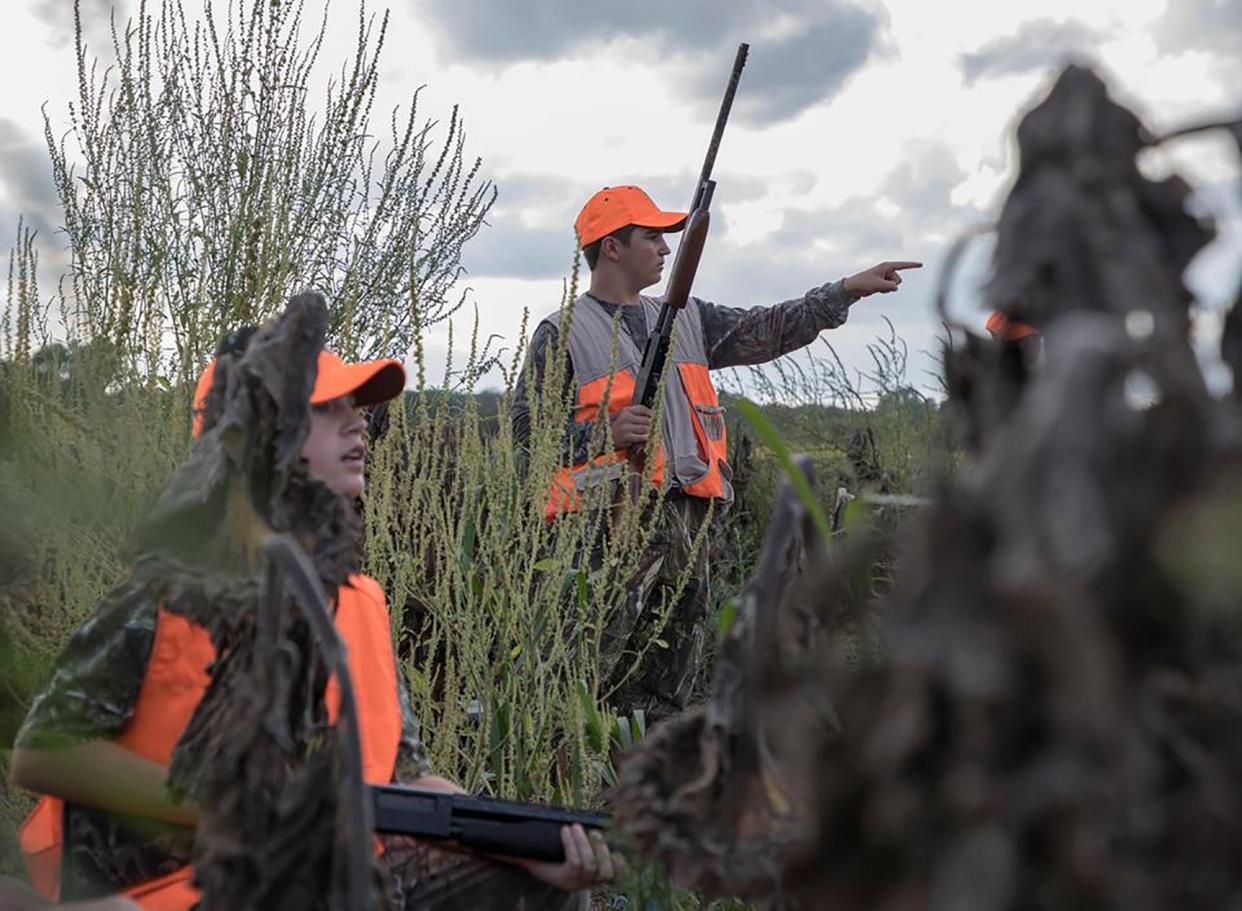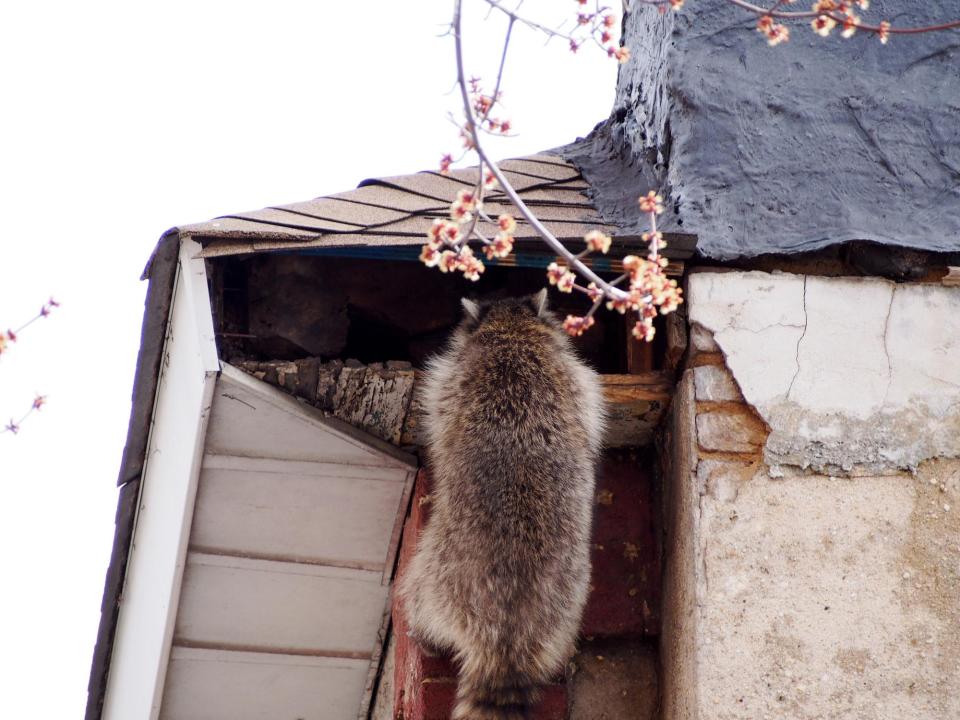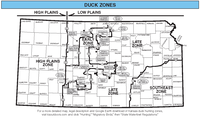Here's why Kansas may expand hunting and trapping season for raccoons, badgers and more

Many Kansans think this state has too many furbearing predators — particularly raccoons, said Matt Peek.
Peek, a wildlife biologist for the Kansas Department of Wildlife and Parks, said he often hears people complain that the state's abundance of furbearers has negatively affected Kansas' populations of popular game birds such as pheasant and quail.
Peek recommended March 31 to the Kansas Wildlife and Parks Commission that it consequently add 13 days to the hunting and trapping season for raccoon, badger, bobcat, mink, muskrat, opossum, swift fox, red fox, gray fox, weasel and striped skunk.
That season, which will begin Nov. 15 this year, would consequently end Feb. 28 instead of Feb. 15, its current ending date.
"By expanding the harvest season, those who are complaining about too many furbearers will have ample opportunity, 3.5 months, to harvest furbearers," Peek told The Capital-Journal Thursday.
The wildlife and parks commission won't be able to vote on the recommendation until September at the earliest, Peek said Thursday.
Commission Chairman Gerald Lauber suggested at least expanding the raccoon season during that body's March 31 meeting.
The state had seen an "almost detrimental" increase in that population, Lauber said.
Kansas also maintains a separate furbearer harvesting season for beaver and otter, which begins Nov. 15 this year and ends March 31.
More: Workers are now replacing concrete walls on the aging Topeka viaduct where 30 tons of concrete fell
Harvesters want more time for bobcat, badger, muskrat, possibly skunk

Peek said he personally can't document a direct link between the populations of furbearers and game birds, though some say there is a direct correlation between the two.
Peek said he supports extending the season for hunting or trapping most furbearers "because there has been a reduced furbearer harvest in recent years due to low pelt prices, so furbearer populations — which are generally abundant anyway — will not be negatively impacted by the additional season days."
"At the same time, many in the public believe furbearers are overabundant, especially raccoons, and that they are negatively impacting game bird populations, so the move to extend season dates seems to have strong support," Peek said.
Some have suggested the state offer bounties and/or extend furbearer seasons to last year-round, he told The Capital-Journal.
"We are responding by recommending extending the harvest season to cover almost the entire time most species have marketable fur," Peek said.
Many fur harvesters support ending the season on Feb. 28 instead of Feb. 15 for harvesting raccoon, badger, bobcat, mink, muskrat, opossum, swift fox, red fox, gray fox, weasel and striped skunk, he told the wildlife and parks commission.
"The primary reason they wanted that extra time is for bobcat, badger, muskrat and possibly skunk," Peek said. "These are species that are still prime and/or have pelt value at that time."
While raccoon pelts are past their prime at that time of year, the demand for harvesting raccoon remains high in mid- to late February from a nuisance perspective, he said.
More: Kansas' rabbit population saw a slight decline, a survey shows. What's saving the species?
Raccoons once made up most of the fur trade in Kansas
The prime period for raccoons was the main thing the state took into account when it scheduled its current furbearer harvesting season for raccoon, badger, bobcat, mink, muskrat, opossum, swift fox, red fox, gray fox, weasel and striped skunk, Peek said.
"Raccoon was our most important furbearer, and they accounted for 50% to 75% of the total value of the fur trade in Kansas, and so they were significantly important," he said. "In recent years, with the price dropped off, two of the last three years they have accounted for less than 5% of the total value of furs taken in Kansas."
In the past couple years, it has become "kind of even hard to sell a lot of (raccoon pelts)," Peek said.
"So the concern that was once expressed by the fur harvesters themselves, about taking what was perceived as the most valuable furbearer resource at a time when it didn't have value, has kind of passed, for the time being anyway," he said.
Hunting seasons scheduled for youths, disabled people, active military
For now, the harvesting season for raccoons and the 10 other furbearers ends Feb. 15 and the season for beavers and otters ends March 31, according to information KDWP has posted on its website sharing dates for various upcoming hunting seasons.
That site says the youth season for hunting quail and pheasant will be Nov. 5 and 6 statewide.
Youths and disabled people will be able to hunt deer Sept. 3-11 statewide and Oct. 8-10 at Fort Riley.
Duck seasons for youths, disabled people and active military will be Oct. 1 and 2 in the state's high plains duck zone and low plains early duck zone, Oct. 22 and 23 in the low plains late duck zone and Oct. 29 and 30 in the low plains southeast zone.
Schedules for Kansas hunting seasons for deer, pheasant, quail and more

Archery season for deer will be from Sept. 12 to Dec. 31 statewide, muzzleloader season for deer Sept. 12-25 statewide and regular firearms season for deer from Nov. 30 to Dec. 11 statewide.
For information about various other deer hunting opportunities being made available, go to the KDWP website.
Duck season will be from Oct. 8 to Jan. 1 and Jan. 20-29 in the high plains duck zone, Oct. 8 to Dec. 4 and Dec. 17 to Jan. 1 in the low plains early duck zone, Oct. 29 to Jan. 1 and Jan. 21-29 in the low plains late zone and Nov. 5 to Jan. 1 and Jan. 14-19 in the low plains southeast zone.
Archery seasons for antelope will be from Sept. 24 to Oct. 2 and Oct. 15-31, muzzleloader season for antelope will be from Oct. 3-10 and regular firearms season for antelope will be from Oct. 7-10, all only in KDWP areas 2, 17 and 20.
Greater prairie chicken season will be from Sept. 15 to Jan. 31 in KDWP's Greater Prairie Chicken Unit.
An archery and shotgun season for turkey runs from Oct. 1 to Nov. 10 in KDWP units 1, 2, 3, 5 and 6 only.
Squirrel season began June 1 and runs through Feb. 28 statewide.
Bullfrog season began Friday and runs through Oct. 31 statewide.
Hunting seasons for coyote, rabbit and exotic doves last year-round statewide.
For more information, go to KDWP's online sportsmen's calendar.
Tim Hrenchir can be reached at threnchir@gannett.com or 785-213-5934.
This article originally appeared on Topeka Capital-Journal: Kansas weighs longer hunting season for raccoons, badgers, fox, more

